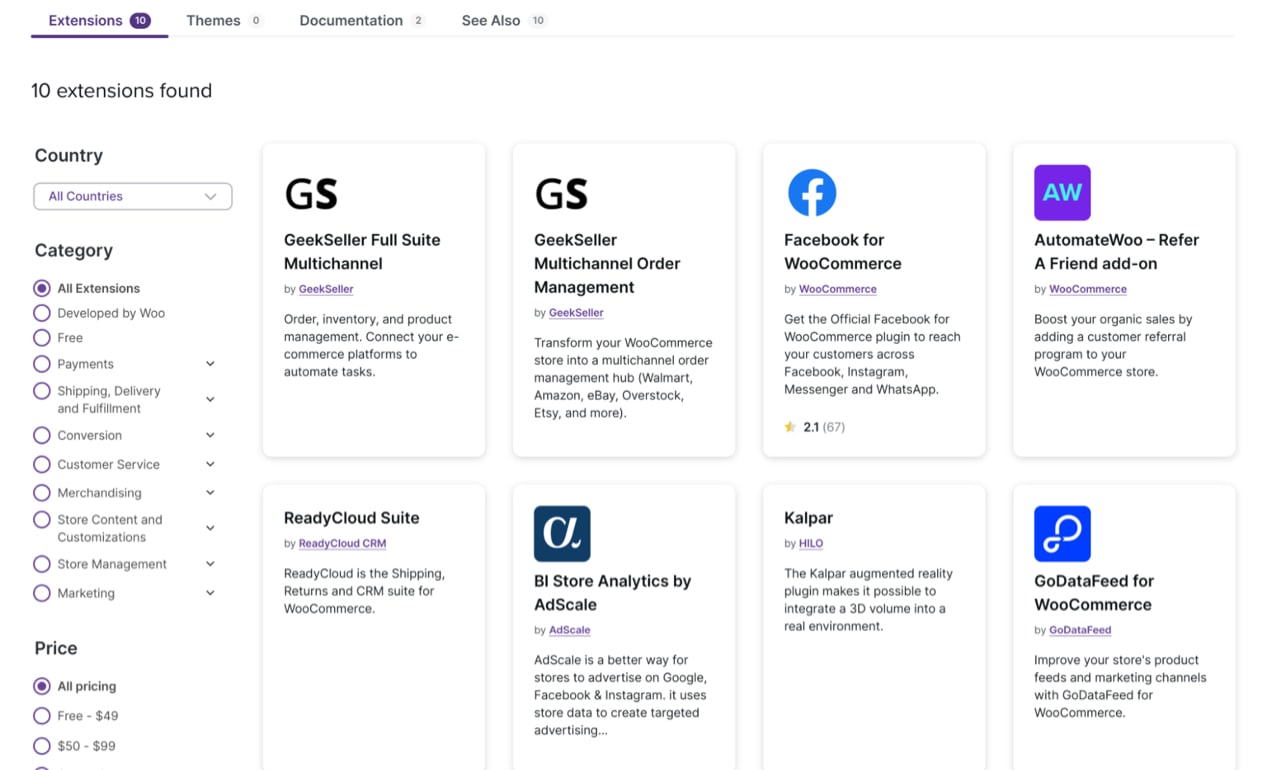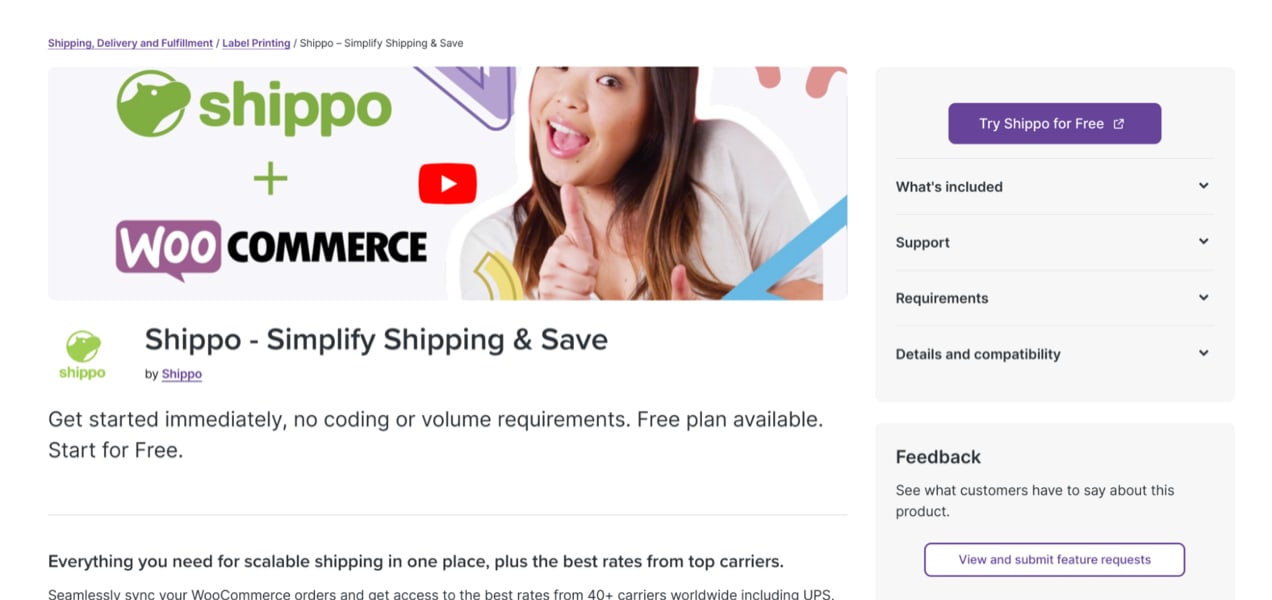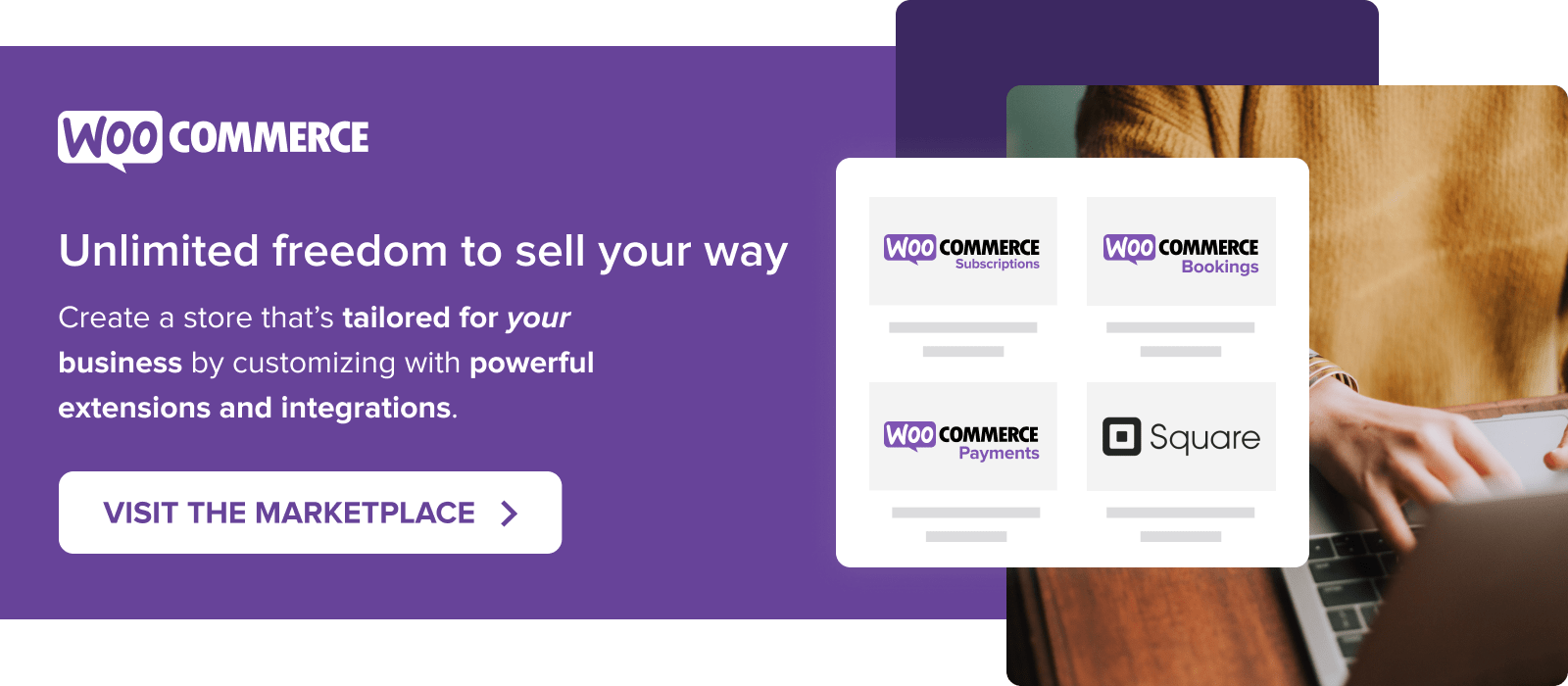As you consider your options for multichannel selling, one thing to look at is an ecommerce aggregator, which is a type of channel aggregator.
This channel aggregator term might sound intimidating, but you’re actually quite familiar with the concept. It’s a staple of online commerce and there are all kinds being used already.
There are transportation aggregators (Uber), food delivery aggregators (Grubhub), short-term rental aggregators (Airbnb), news aggregators (Flipboard), blog and content aggregators (Feedly), and many others.
An ecommerce aggregator works in a similar manner to those, but for products being sold online.
So, if you’re looking for a way to expand your reach into new markets without having to spend significantly more money on your marketing efforts, operations, and online infrastructure, tapping into an ecommerce aggregator may be a great strategy.
This article will explore everything about ecommerce aggregators. What are they? How do they work? What are the pros and cons? What are the benefits? What are some examples of actual ecommerce aggregators? How are they different from marketplaces like Amazon and eBay?
We’ll look at all this, and by the end you’ll be equipped with enough information to decide if pursuing an aggregator business model is right for your online store.
What is an ecommerce aggregator?
An ecommerce aggregator is like an online version of a superstore. It’s a single brand that sells products from a variety of merchants using its own platform, business operations, and customer support team.
A variation on the aggregator model is known as multichannel listing software. It’s also called multichannel retail software and multichannel ecommerce software. With these tools, you upload your products to the software, and it lists them on online marketplaces such as Amazon, eBay, and Walmart.
“A channel aggregator plays a pivotal role in a merchant’s multichannel strategy by providing centralized control, optimizing operations, enhancing customer experience, and facilitating growth. It allows merchants to effectively navigate the complex landscape of modern ecommerce and reach a broader audience while maintaining operational efficiency and consistency.”
Abhishek Jasiwal, CEO, CedCommerce
You can actually accomplish this directly from your own WooCommerce site. This minimizes extra steps and provides greater control over your digital presence. The Amazon for WooCommerce and eBay Integration for WooCommerce extensions are just two tools to keep in mind.
Aggregators and listing software are able to increase brand visibility simply by the number of products for sale on their sites and their existing online infrastructure and processes.
Types of ecommerce aggregators
In general, when you begin looking for an ecommerce aggregator, you will find three types:
1. Rollup aggregator companies
This sort of aggregator looks for successful small- and medium-sized ecommerce businesses to buy. These companies amass an array of products from multiple brands in the industries they want to specialize in, and sell them through their own platforms, or existing ones like Walmart Marketplace.
Rollup aggregators look for profitable companies with products they believe they can sell successfully. This sort of aggregator only makes sense if you like the idea of selling your business. So if you’ve been wanting to try your next venture but all your time is being consumed by your existing business, selling to an aggregator might give you the capital you need to launch your next idea.
2. Comparison shopping platforms
One type of ecommerce aggregator is a comparison shopping website such as Shopzilla or Bizrate. There are many of these online, with varying levels of quality when it comes to usability. Most of them will direct the customer to your online store to complete their purchase.
With sites like these, you can reach a much larger audience than you would just from your ecommerce store. But, there’s also more competition. We’ll discuss pros and cons of aggregators a bit later.
3. Multichannel listing software
A third variety of ecommerce aggregator goes by several names, such as multichannel retail software. This is a software platform that enables you to upload all your products, and the software will then list them for sale on the online marketplaces.
Using multichannel ecommerce software enables greater brand visibility on various channels using online tools, without having to do all the work of setting up and managing a bunch of different accounts.
How do aggregators work?
The process depends on the type of aggregator you end up working with.
For a rollup-style aggregator, the process includes determining a valuation for your company, agreeing on a multiple, and finalizing the terms of the sale.
For comparison aggregators, your ecommerce brand will sign a contract with the aggregator to form a partnership. The contract will specify terms, quality requirements, commissions, product availability, and other details.
Then, they’ll sell your products on multiple channels and earn commissions for each sale, similar to an online marketplace. There may be other revenue models as well, such as the pay-per-click model used by price comparison sites.
The aggregator may ask you to quote a minimum price for your products. Then, they will set prices for customers, and may change them occasionally based on the time of year, special deals and offers, or other reasons.
If you can find an aggregator using this pricing approach, it can save you from getting trapped in a race to the bottom, which is a risk of listing products on the price comparison sites. You want to sell based on more than just price, ideally. But, sometimes the tradeoff of getting more traffic and higher sales volumes for lower margins works out in your favor.
“The right channel aggregator can do more than just add products to channels. Opting for a more robust multichannel solution can significantly reduce manual labor, ensure data consistency and quality across channels, and provide levers to improve performance.”
Bryan Falla, Director of Marketing at GoDataFeed
Multichannel retail software usually operates on a simple monthly price, as is common with other software services. They list your products on multiple channels and marketplaces, and you bring in more revenue.
If you already use WooCommerce for the independence it provides (full ownership of your business and website, no transaction fees, no monthly service fees, etc.), you might consider using it as your multichannel retail software of choice.

The role of a channel aggregator in multichannel selling
Depending on the platform and the software you’re using, an aggregator can relieve you of the burdens of handling things like payment processing, order fulfillment, and customer service. Again, it depends on which type you end up working with.
These services increase the likelihood of your products being discovered and purchased online, and they make shopping easier for customers because they don’t have to visit so many websites if they want to compare products.
Benefits of using an ecommerce aggregator
For rollup-style ecommerce aggregators, the biggest benefit is that you get to sell your business. That’s a great reward for all the work you put into growing your small business into a profitable venture.
For business owners who don’t want to sell, or if yours isn’t quite at that level yet, here are the main benefits of using the other types of aggregators and multichannel software:
More traffic
Whether you’re attracting more online traffic through a price comparison website or getting more consumers to see your products on marketplaces, more active buyers will see and consider your products using the aggregator business model.
More revenue
More traffic should lead to increased revenue. And if you can capture the contact information of these customers, and the terms of your agreement allow, you can continue marketing to them and turn one-time customers into a source of repeated and long-term revenue.
Faster integration with online marketplaces
An ecommerce aggregator, as well as multichannel retail software, makes it much faster to sell on Amazon and other platforms like Walmart, eBay, Alibaba, etc.
Normally, you’d have to open an account, design your product pages and other online assets for each marketplace, and then sync it with your inventory. Using aggregators and software, this all happens much faster once you upload your products, images, and other information.
Centralized off-site management
Aggregators remove the burden of managing all the technology so you can focus on product development, marketing, inventory management, and other ventures you’re pursuing.
This is a huge win if you’re constantly overwhelmed with trying to keep up with all the technology. Someone else manages the technical aspects of selling online.
Accurate data insights
Most of these online marketplaces and aggregator platforms have robust data analytics. They monitor and measure everything, so you’ll know what’s working, how shoppers respond to your products, prices, and offers, and more.
You can get this on your ecommerce website, too, but again, more of the work depends on you. With aggregators and multichannel ecommerce software working on your behalf, you’ll have better data without having to put in so much effort.
What’s the difference between an aggregator and a marketplace?
This is an easy thing to confuse, because they sound similar.
Aggregators and marketplaces both sell products from a variety of vendors, and let customers shop and compare brands and prices. So what’s the difference? Here are the main ones.
Product ownership
Online marketplaces are merely a platform. They do not own the products they sell. They simply take a percentage of the sale price, plus other fees.
But ecommerce aggregators, through partnership agreements with sellers like you, may actually own multiple brands. This is especially true if you sell your business to an aggregator who then sells your products along with the others they’ve amassed.
Product fulfillment
Often, online marketplaces do not handle fulfillment or shipping. If a customer orders a product from their website, you, the seller, are the one who fulfills the order. Yes, there are exceptions to this. Amazon and Walmart, for example, do offer to take over fulfillment on your behalf, but it costs extra money, so it’s not an inherent part of the aggregator business model.
On the other hand, aggregators who have taken ownership of your products, either through purchase or agreement, will also handle fulfillment.

Product quality
Ecommerce aggregators will usually insist on a relatively high bar for product quality and customer service. Not just any online seller can get picked up by an aggregator.
But just about anyone can sell on most marketplaces. Amazon marketplace does not require certain standards of product quality. They attempt to monitor scams, and poorly reviewed products and businesses can lose their accounts, but this happens after the fact, not as a requirement of opening an account. Walmart marketplace is a bit more selective than Amazon, but not to the extent of aggregators.
We could also say it this way: To the customer, the ecommerce aggregator feels like the seller. But with marketplaces, you feel like the seller, and the marketplace is like a middleman.
Pricing
Pricing can range all over on marketplaces, from the cheapest stuff to the most expensive, across all product categories.
With ecommerce aggregators, typically pricing has a bit less variation, due to the higher standards of quality, and the smaller number of competing products.
Product variety
Lastly, as just mentioned, there is literally no end to the types of products you can find on marketplaces. The selection and diversity of products is as vast as the human capacity for invention.
But with ecommerce aggregators, there will be less variety because most aggregator companies choose to specialize in particular industries and verticals.
Pros and cons of ecommerce aggregators
You may feel that working with an ecommerce aggregator or marketplace integrator is a good move for your business. But you need to know more.
Here’s a list of the pros and cons of the ecommerce aggregator business model:
The pros
More product exposure
Ecommerce aggregators and multichannel listing software get your products out there in ways your one ecommerce website could take years to achieve.
With the help of aggregation, you will reach a larger audience, new customers, and new markets that you wouldn’t have reached any other way. This is especially true when it comes to international sales. So if sales volume is a primary goal for your business, this is a major advantage of using aggregators.
Quality by association
For ecommerce aggregators that require a higher level of quality for the products they sell, your presence there lends you immediate credibility and reduces the burden to establish trust. You can truthfully declare that your product quality has been vetted, and it passed a higher standard than what consumers will find on a marketplace platform.
Less technology to manage
You get more exposure on multiple channels, without having to do all the work it would normally take. Other companies, with their own teams of specialists, are managing the technology and logistics of online selling. You can reap more revenue without more work.
More marketing without more expense
Likewise, because these ecommerce aggregators have their own marketing, their own advanced SEO tools, and their own methods of attracting and converting online traffic into paying customers, you benefit without having to spend more marketing dollars.
This is a major advantage of using multichannel listing software. For the monthly fee, they are listing your products on the big marketplaces, and the existing systems do a lot of marketing and product promotion on your behalf.
The cons
Loss of brand distinction
With your own ecommerce store, you can carve out a distinct brand identity and personality. That’s much harder to do when partnering or selling to an ecommerce aggregator or using multichannel retail software.
You also don’t get to inject the type of personalized and sincere customer support, packaging, follow-up, and other brand-defining features that may be very important to you.
More direct competition
You may increase sales volume using ecommerce aggregators and software, but your profits might not rise at the same rate. With so many other competing products on these sites, and lots of people buying based solely on the lowest price, your margins shrink and your profits decline.
So if profits are more important to you than sales volume, using aggregators may not be the right move.
Your product listings sit there next to competing ones, and the marketplaces that your listing software and some aggregators use will think nothing of promoting others in favor of yours if it suits them. They want to sell anything, because they get a commission for it. They don’t care about your business in the same way you do.
Loss of control and autonomy
There’s a concept called “owned media”. On your ecommerce website (as long as you’re using something like WooCommerce instead of proprietary platforms like Wix or Shopify), you own it. You own the URL, the design, the product pages, the copy, and everything else. It’s yours, and no one can turn it off except for you.
Again, this is a primary advantage of using WooCommerce — you own it all.
When you work with ecommerce aggregators, listing software, and marketplaces, you give up your autonomy. They can close your account, change their terms of service, increase fees, alter shipping processes, add new requirements that don’t work in your favor, prohibit certain products, control your customer data, and so much more.
You don’t own your content or your presence on these other sites. And that’s a risk of using ecommerce aggregators.
This is why a core principle of multichannel selling is to sell elsewhere in addition to your own ecommerce site. You always want to maintain at least one channel in which you have full control.
The only exception to this is if you want to sell to a rollup-style ecommerce aggregator. In that case, you’re willingly giving up control of your business, because you’re selling it and taking the financial windfall. And that’s a win all in itself.
What if I want nothing to do with channel aggregators?
Here’s a surprise — now that you’ve learned about this, even if you aren’t interested in working with ecommerce aggregators, you may decide to take advantage of other aggregators that may help your business.
For example, did you know that there are also shipping aggregators? And you can benefit from them as a customer by comparing price and service options from a variety of carriers.
Some of the most well-known shipping aggregators are:
- Shiprocket: offers multiple carrier options in numerous countries
- Shippo: another international shipping aggregator with over 85 carriers
- Pickrr: works with over 30 carriers and uses AI among other tools

These services are worth exploring whether you ship internationally or only work in one country. You may be able to save money and improve your supply chain management, customer experience, order management, and more using the many carrier options and other tools these platforms offer.
Top channel aggregators for ecommerce
To give you an idea of what’s out there, we’re going to look at a few examples. But to start, here’s a list of over 70 ecommerce aggregators. You can use that as a starting point if you want to look up a bunch of them over time.
To begin, let’s look at a few rollup-style ecommerce aggregators — companies that are looking to buy ecommerce businesses and add those products to what they offer customers.
Thrasio
Thrasio sells products in industries related to home, fitness, kids, outdoor, and cleaning supplies. They have an established brand and a process for evaluating small businesses who are interested in selling. This is one of the biggest ecommerce aggregators.
Unybrands
Another buyer of ecommerce businesses, Unybrands is a great option if you’re looking to sell your company for a good value.
Mensa
Mensa buys companies and lets their brand live on even after the business sale, and helps small business owners continue to profit from the ongoing growth of their former companies.
SellerX
SellerX focuses its purchases on Amazon-based businesses. So their specialty isn’t based on industry as much as it is the marketplace used.
Next, here are a couple aggregators who partner with businesses who are interested in expanding their reach using the aggregator model.
Growve
Growve specializes in ecommerce industries related to beauty and personal care, active nutrition, and dietary supplements. They’re looking to acquire more businesses, as well as partner with existing ones through their Growve Marketplace Agency.
This is a good example of how most aggregators tend to focus on particular industries and verticals. If you like the idea of working with an aggregator, part of your task will be to find ones who work within your industry.
Perch
Perch offers several ways to work with them. They acquire brands, work with existing ones, and also have an affiliate marketing service.
Lyst
Lyst is an example of a comparison shopping aggregator that deals in just one industry, which, in this case, is clothing. This is a shopping site with its own brand, payment processes, customer support, and fulfillment, except they work with multiple brands.
Retail software and other comparison sites
As mentioned, another aspect of the aggregation model is to use multichannel listing software. There are a number of great companies offering this service, including Webgility and Listing Mirror, but as with aggregators, even the listing software companies tend to specialize in particular industries.
Here’s a list of mullti-channel listing software reviews.
Lastly, as mentioned earlier, you can also list your products on comparison shopping sites. Some of the most well-known ones are PriceGrabber, Shopzilla, and Bizrate.
How to choose the right channel aggregator for your business
If you’d like to pursue this strategy for multichannel growth and expanding your reach, there are three steps to choosing the aggregator that’s best for you:
1. Clarify your goals
First, be sure you know what you’re looking for. Are you interested in selling your business? Partnering with an aggregator? Maintaining more autonomy while still expanding your reach? Maximizing sales volume? Protecting profit margins?
Once you know what you want, it will be easier to sort through the many options out there and choose the ones that align with you.
2. Find aggregators that align with your needs
The options that take less commitment from you are the comparison sites and multichannel retail software options. Those don’t require complex agreements and contracts to the same degree as the aggregators looking to purchase businesses or assimilate your products under their brand.
So, look for ecommerce aggregators, sites, or software that fit your industry, your goals, and, when applicable, your budget. Also, be sure you know the time commitment required for each one so you don’t overextend yourself.
3. Choose the ones you want to start with
Narrow down your initial list to one or a small handful of choices. You may be able to work with more than one at the same time.
And remember, this is just one way to expand into multichannel selling. You can also just open your own accounts with the online marketplaces and manage them yourself.
Here’s a comparison of the top online marketplaces around the world.
Reach new heights with your store
Ready to expand your reach while maintaining full control over your business? Multichannel selling is the best way to do this.
With WooCommerce, you can run your own store with full control over fulfillment, design, branding, content, and more. But you can use the large extension library to sync product information and inventory levels with third-party marketplaces. It’s the best of both worlds!
